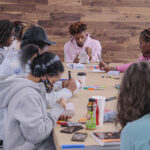The death of Charlie Kirk on the Utah Valley University campus has shocked people across the political spectrum. Kirk was known for his far-right positions, which often made him a controversial figure. What has stood out, though, is how even groups and media outlets that strongly disagreed with him have publicly condemned the violence and called for unity. To me, this moment connects directly to what we learned in Week 1 about media literacy; understanding not just the news itself, but how it is presented, interpreted, and used to shape public conversations.
One of the big questions this event raises is what it means to respect others without agreeing with their beliefs. Respect here doesn’t mean endorsement. The New York Times editorial board, for example, made it clear they disagreed with Kirk’s politics, but they still condemned his assassination as unacceptable in a democracy. That distinction is important. Respect, in this sense, means protecting the right for people to speak and engage in debate, even if we think they are completely wrong. Without that baseline of respect, civil discourse falls apart.
Media coverage plays a huge role in influencing how the public thinks about unity across divides. CNN’s acknowledgment of Kirk’s influence on American politics, or the Washington Post highlighting his willingness to engage with opponents on college campuses, shows a choice to frame him not just as a polarizing figure but also as someone who valued debate. This framing encourages readers to think beyond ideology and focus on shared values like free expression and human dignity. In other words, media can set the tone for whether we lean into polarization or seek common ground.
For college students today, this matters even more. Universities are supposed to be spaces where people encounter different ideas and learn how to challenge them thoughtfully. If we only engage with people who think like us, we miss the point of higher education. Kirk’s death, and the responses to it, remind us that disagreement should push us to debate harder, not to shut people down, or worse, to harm them.
As students, we can practice this by listening, questioning, and even arguing, but always recognizing that the person across from us has the same right to speak as we do. Media literacy helps us see when coverage is encouraging division versus when it is nudging us toward unity. Right now, the calls for unity are an example of media rising to the occasion, and that’s something worth paying attention to.
Categories: Opinion










